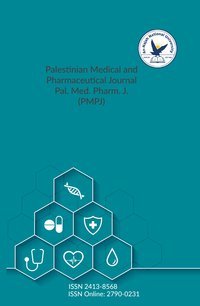The acute hemodynamic effect of dual-chamber pacing: atrioventricular stimulation ver-sus intrinsic atrioventricular conduction
Authors:
Article info
2020-02-17
2020-05-04
69 - 76
Keywords
- Dual-chamber pacing
- Optimization of atrioventricular delay
- Impedance cardiography.
Abstract
The study aimed to determine whether impedance cardiography-based stroke volume (SV) measurements could be used in optimizing the atrioventricular (AV) interval for dual-chamber pacemakers in patients with preserved AV conduction. The study included 42 con-secutive patients (33 males; mean age, 66.8 ± 7.7 years) indicated for a dual-chamber pace-maker or dual-chamber defibrillator. SV was evaluated during intrinsic AV conduction and sequential AV pacing 4 ± 2 days after implantation by using impedance cardiography. During intrinsic AV node conduction, the mean PQ time was 205 ± 61.9 ms. The mean optimal AV delay in the DDD mode was 103 ± 25 ms. The mean SV was 65.8 ± 14.0 ml during intrinsic conduction and increased to 73.6 ± 14 ml (P < 0.001) after optimizing the AV interval. The mean increase in SV during optimal AV delay was 17 ± 17% in patients with prolonged AV conduction versus 6 ± 5% in patients with normal AV conduction. Dual-chamber pacing without optimizing AV delay may impair hemodynamics (65.8 ± 14.0 ml for the mean SV of the hemodynamically worst AV delay vs. 61.7 ± 11.7 ml for the mean SV of the intrinsic AV conduction; P = 0.001). AV optimizing in patients with a baseline PQ interval of <160 ms did not improve hemodynamics. In patients with dual-chamber pacemakers and a baseline PQ-interval of ≥160 ms, optimizing the AV interval significantly improved the SV. Blindly pro-gramming AV delay may be harmful through impairing the hemodynamics.
The acute hemodynamic effect of dual-chamber pacing: atrioventricular stimulation ver-sus intrinsic atrioventricular conduction
المؤلفون:
معلومات المقال
2020-02-17
2020-05-04
69 - 76
الكلمات الإفتتاحية
- Dual-chamber pacing
- Optimization of atrioventricular delay
- Impedance cardiography.
الملخص
The study aimed to determine whether impedance cardiography-based stroke volume (SV) measurements could be used in optimizing the atrioventricular (AV) interval for dual-chamber pacemakers in patients with preserved AV conduction. The study included 42 con-secutive patients (33 males; mean age, 66.8 ± 7.7 years) indicated for a dual-chamber pace-maker or dual-chamber defibrillator. SV was evaluated during intrinsic AV conduction and sequential AV pacing 4 ± 2 days after implantation by using impedance cardiography. During intrinsic AV node conduction, the mean PQ time was 205 ± 61.9 ms. The mean optimal AV delay in the DDD mode was 103 ± 25 ms. The mean SV was 65.8 ± 14.0 ml during intrinsic conduction and increased to 73.6 ± 14 ml (P < 0.001) after optimizing the AV interval. The mean increase in SV during optimal AV delay was 17 ± 17% in patients with prolonged AV conduction versus 6 ± 5% in patients with normal AV conduction. Dual-chamber pacing without optimizing AV delay may impair hemodynamics (65.8 ± 14.0 ml for the mean SV of the hemodynamically worst AV delay vs. 61.7 ± 11.7 ml for the mean SV of the intrinsic AV conduction; P = 0.001). AV optimizing in patients with a baseline PQ interval of <160 ms did not improve hemodynamics. In patients with dual-chamber pacemakers and a baseline PQ-interval of ≥160 ms, optimizing the AV interval significantly improved the SV. Blindly pro-gramming AV delay may be harmful through impairing the hemodynamics.
An-Najah National University
Nablus, Palestine
Nablus, Palestine
- P.O. Box
- 7, 707
- Fax
- (970)(9)2345982
- Tel.
- (970)(9)2345560
- (970)(9)2345113/5/6/7-Ext. 2628
- [email protected]
- EIC
- Prof. Ismail Warad
